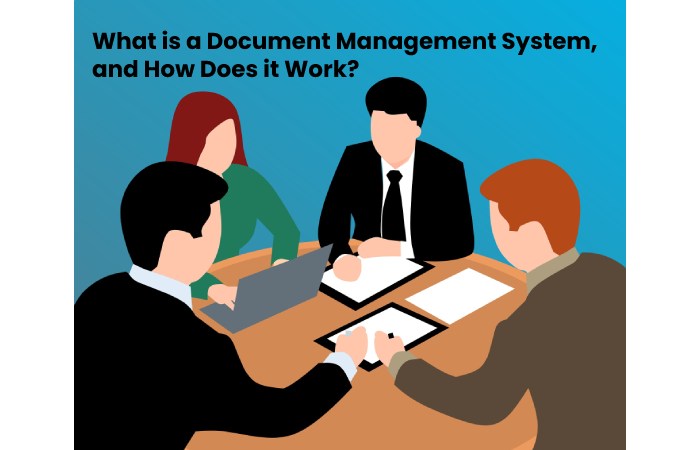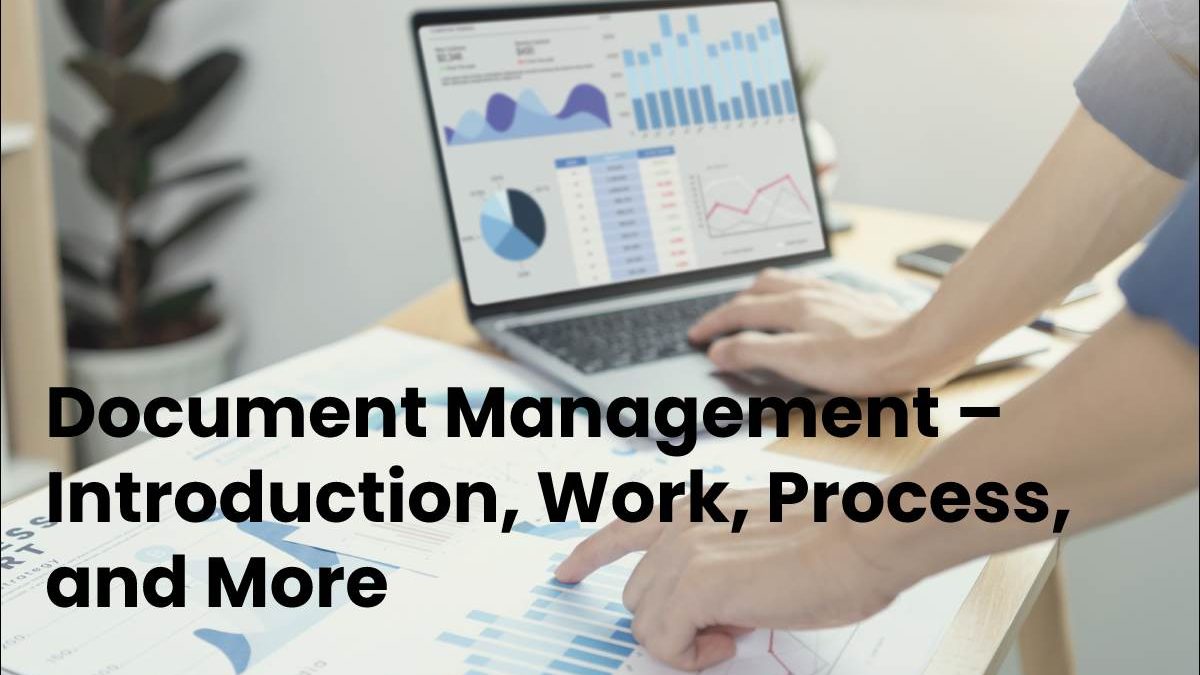Table of Contents
Introduction
Document management is the process that focuses on reviewing, storing, and recovering essential documents and information handled within a company. It applies technical standards that are practical when managing physical and electronic files.
Also Read: Assistive Technology – Introduction, Benefits, Tool, and More
What is a Document Management System, and How Does it Work?

A document management system is a computer system that supports a business structure and streamlines its document workflow.
Document Management – It Involves the Following Processes:
Document Management – Organize the Folder Structure
It doesn’t matter if your documents are printed or digital. DMS software can support you in establishing your file structure. Then, using a straightforward and spontaneous folder structure, all team associates can easily store files and find documents uploaded by other team members.
Document Upload
Since most organizations use electric files and digitalize paper documents, a suitable document system should allow users to upload files via multiple methods, such as (bulk) upload, scanner, email, or email—mobile apps.
Document Indexing
If the files are not indexed, there is a good chance that some files will not be found again, even after a short period. Indexing describes tagging documents with different search terms so they can be easily crawled and located.
Document Search
The best indexing feature is useless if your DMS software lacks a powerful search feature. Therefore, a search function should be simple while offering a wide range of customizable search options.
Workflow Automation
A large organization with thousands of workers would lose an incredible number of working hours if everything had to complete manually. A document system with workflow automation allows employers to set rules for how new documents should organize and protect.
Document Security
Security features should always be essential and must for some businesses. For example, managing legal documents requires the highest security standards, as the documents contain personal information about clients and cases. Also, good records management requires version control.
Also Read: Online Digital Trends
Eight Steps to Impact the Document Management Process in your Company
Document management within a company requires regulation, control and planning to carry out all administrative procedures effectively.
Specialists in document management assure us that there are eight steps to impact the document management process in a company. So stay with us and note everything you need when executing optimal management.
Step number 1: Planning – Document Management
Planning made of all those administrative activities that allow the proper review and assessment of all documentary information, taking into account the following elements:
- The legal context
- The technical context
- The functional context of the company.
In this planning stage, all the needs and objectives of the business review analyze and interpret, guiding all the document management strategies.
It is how planning is nothing more than the implementation of:
- protocols
- standards
- Management objectives
As well as the plan and implementation of the bases that must be taken into account in the preparation, categorization and storage of files and documents, having as a starting point a preliminary review.
Step number 2: Production
In this step, an exhaustive evaluation of all the company’s records is carried out, from their creation, entry and categorization, without forgetting their relevance and functionality in all administrative processes.
Similarly, in this step, everything related to:
- The creation
- Structure
- supports
- means of treatment
- The execution of technologies and strategies.
All this is to be able to manage and intervene effectively in the implementation of resource-saving policies.
Step number 3: Management and Processing
In this step, the analysis of the documents in a comprehensive manner is of vital importance. Therefore, we must consider their impact on the company’s internal and external processes and functionality. In this third step, all the procedures are reviewed in depth by those that the file or document must pass, making its quality very clear and taking advantage of the ease of search and access that it should have.
With the implementation of this step, the aim is to identify and control the actual object of the document and its direct intervention in the different administrative, legal, consultation and business management processes.
Step number 4: Organization – Document Management
This fourth step covers all the technical operations of document management, through which an exhaustive review of the file or document will be carried out, establishing the following elements entities:
your category
documentary series
valuation
Storage time
department to which it belongs
Type of file to which it will destined
The purpose of this step is to establish the document order and storage based on the life cycle of the file or document.
Step number 5: Transfer – Document Management
The implementation of transfer policies to documents in their archiving phase is where the following aspects must be taken into account:
- formats
- the migration
- The structure of the conservation
- The conversion
Step number 6: Disposition of Documents
Therefore, In this sixth step, all the selection and evaluation processes of the file or paper must consider, all for the benefit of its conservation. For this, the withholding tables and documentary valuation must consider.
The adequate disposition of the documents allows for monitoring each file’s life cycle to give it an effective treatment. It also serves to establish security protocols for its elimination and destruction.
Step number 7: Long-Term Conservation
In this step, all the procedures and requirements that must be carried out throughout the document management procedure identify to guarantee the documents’ long-term preservation.
Step number 8: Evaluation – Document Management
In this last and no less important step, the process is implement to determine the primary and secondary values of the different files or documents. These values will help establish the relevance within the company, helping with adequate conservation and elimination. Definitive, temporary or definitive.
As you can see, the execution of each of these steps will positively impact any document management process you want to implement in a company, thus improving all the company’s strategies.
It is how implementing document management processes in your company will benefit you by automating and optimizing everything related to filing and document management. However, it is worth remembering that carrying out this document management implementation is difficult since it requires attention, time and total organizational capacity.
Also Read: Marketing Agency – Introduction, Advantages, Services, and More
Conclusion
Therefore, Document management is the set of technologies and techniques used to manage and centralize an organization’s documents, accessing the information from a single place without the need to enter too many passwords. Thus, the main objective is to control the flow of these documents throughout their life cycle, which implies an improvement in several aspects of the administration of a company.

